Literacy
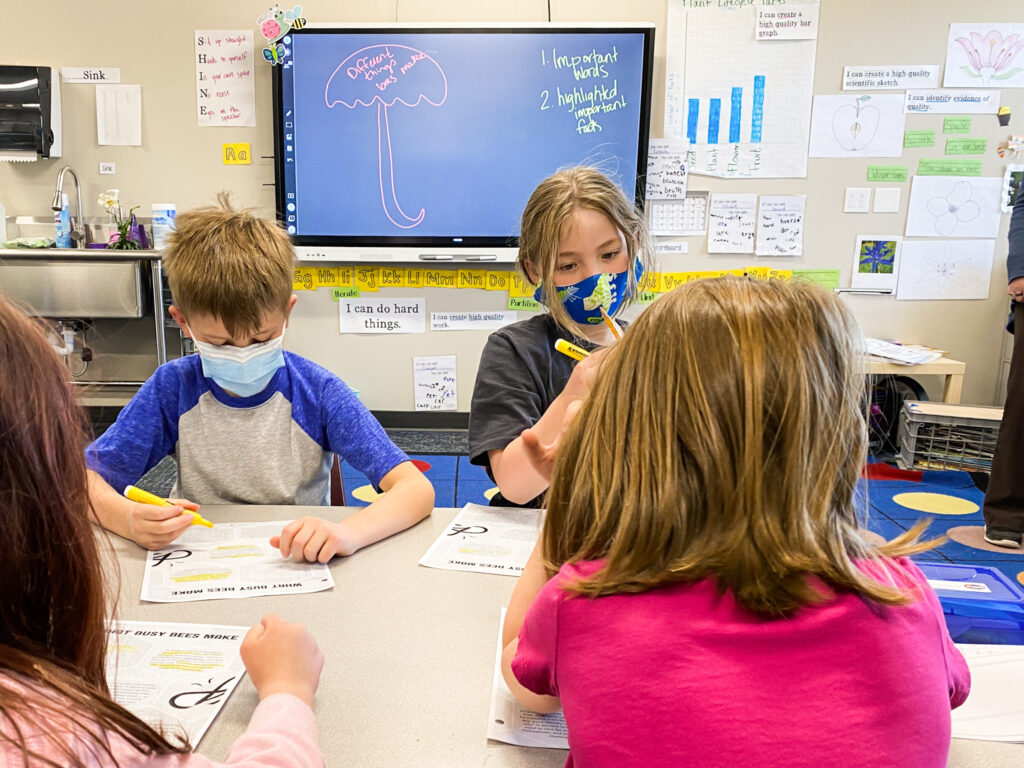
Palouse Prairie’s English Language Arts curricula address the Common Core State Standards for Literacy. In kindergarten, students participate in whole group, small group and individual literacy instruction in order to build a solid reading foundation. They are challenged to grow as readers, writers and speakers by building phonological awareness and becoming more fluent in letter names and sounds.
As students’ literacy skills develop, they learn to read through a balance of informational and literary texts. Small reading groups are instructed on the reading process, which includes work around fluency, accuracy, and comprehension skills. Classroom structures allow students the opportunity, daily, to choose between independent reading and writing, buddy reading, and word work or journaling.
Students learn to understand the role of characters, points of view and historical events by writing about themselves and the world around them in the context of the past, present and future. In their writing, students focus on neatness, meaning, sequence and detail in addition to basic grammar skills.
Throughout all grades, students use research, writing, and discussion to build oral language skills, content knowledge, and habits of scholarship. Hands-on learning provides students an opportunity to learn through discovery, observation, and discourse. Small group instruction provides targeted instruction related to the whole group lesson.
Math
In the EL Education model, mathematics is taught in stand-alone mathematics sessions. Whenever possible, it is also integrated into other subjects, projects, and learning expeditions. Teachers support all students to think like mathematicians and cultivate mathematical habits of mind, including curiosity, risk- taking, perseverance, valuing evidence, precision, and craftsmanship.
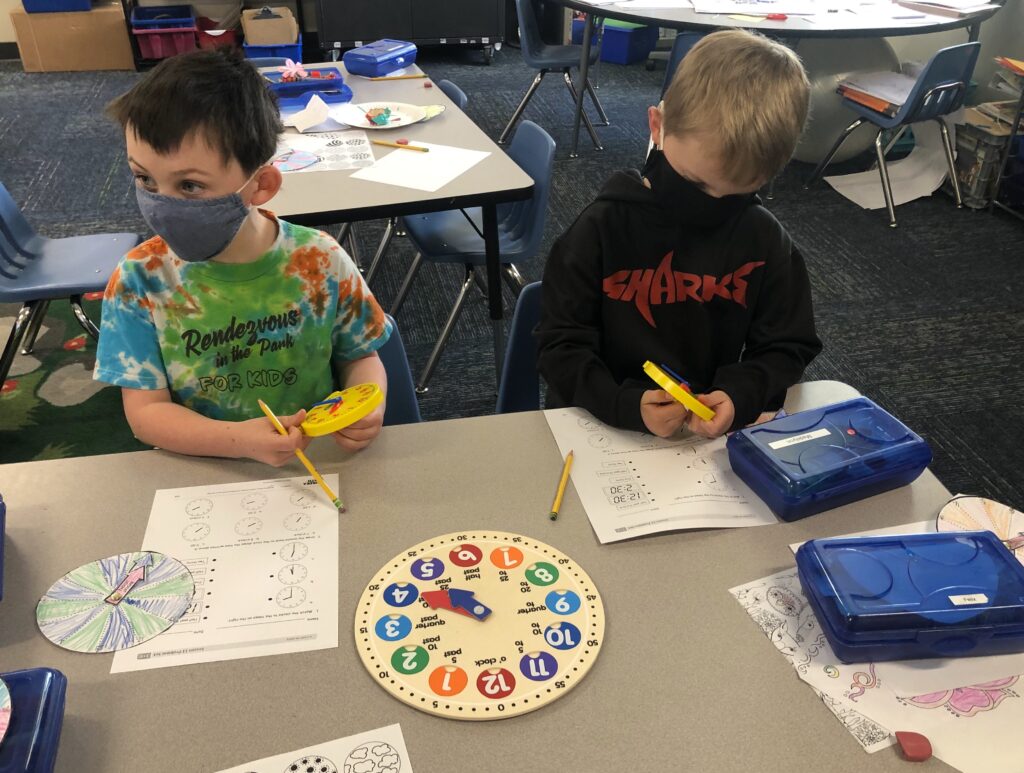
The two resources that PPCS uses for math education are the Develop Mathematical Thinking Institute (DMTI) and Eureka Math. DMTI offers a thorough, research-based approach to math education that addresses all foundational aspects of what it means to learn, and love, mathematics. These approaches provide a focus on teaching Spatial Reasoning and Measurement, two important predictors of success in math. Eureka Math is designed to teach math as a coherent body of knowledge that follows the proper learning progressions required for true math fluency. Using these two curriculum resources helps teachers to instill deep, conceptual understanding that students can build on, while also allowing them to find the joy in the subject. Students learn to think, strategize and solve problems… not just get answers.
These curricula invite multiple problem- solving strategies, representations, and/or solutions that generate understanding of key mathematical concepts. Teachers craft learning targets that focus on the key mathematical concept or skill of the lesson in student- friendly language. The curricula are animated with engaging, real-world examples and rich tasks with multiple entry points. Mathematical modeling is used to connect mathematics to other disciplines. Teachers foster rich mathematical discourse in the classroom by asking open-ended questions, showcasing students’ own thinking and arguments about mathematics, and teaching the vocabulary of the discipline.
Teachers build excitement and motivation by helping students develop a belief in their own capacity and celebrating their growth in mastering facts. They promote flexibility in mathematical thinking by celebrating diverse thinking and multiple-solution strategies. Teachers empower all students to see themselves as mathematicians, refuting stereotypes about who can succeed in mathematics and celebrating the past and current mathematical contributions of diverse individuals and groups. This builds mathematical courage, creativity, and confidence.
Habits of Scholarship
Character development is equally as important as producing high quality work and mastering knowledge and skills. Throughout their educational career at PPCS, students are working to become effective learners, ethical people and community members who contribute to a better world. Our Habits of Character CREW traits embody habits of an effective learner, like engagement and welcoming, and character traits of ethical people, like respect and compassion.
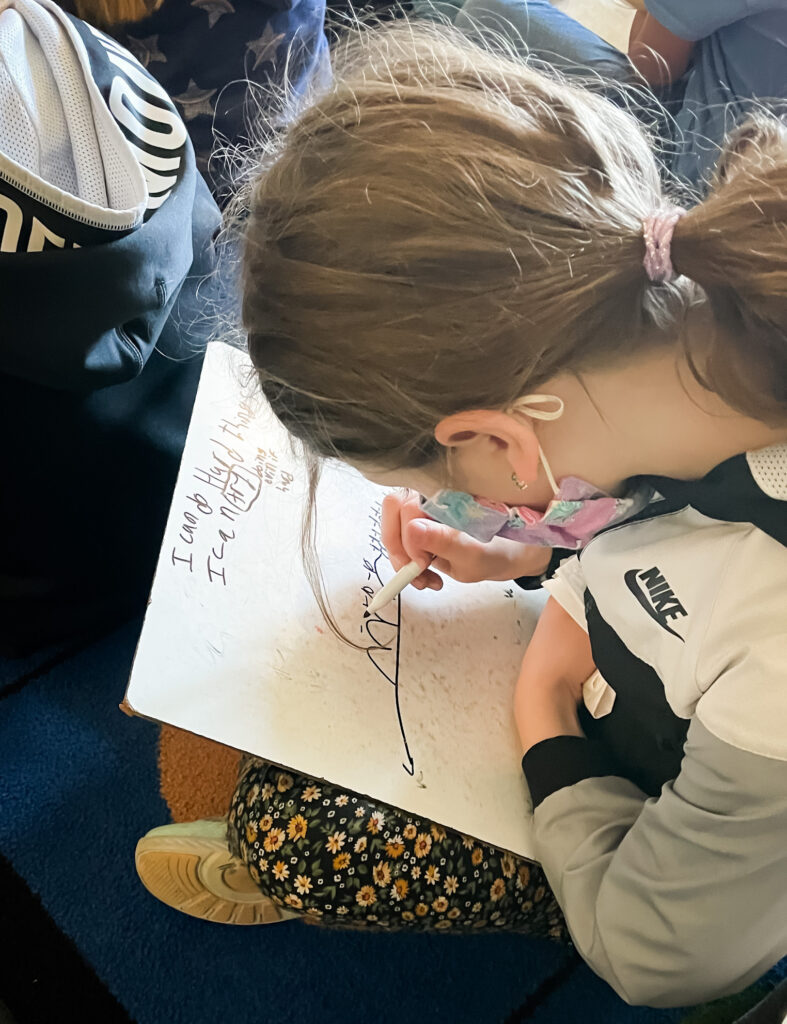
All three aspects of strong character (becoming effective learners, becoming ethical people, and contributing to a better world) are essential for success in school and in life. In the EL Education model, all learning is character-based. Students are on a mission to do good work: work that is good in quality, good for the soul, and good for the world.
Examples of Expeditions
Inch by Inch, Row by Row, How does my Garden Grow? Kindergarten Expedition
The Kindergarten Crew focused on plants during their Spring Expedition. The Spring Expedition included two case studies with three guiding questions:
- What are the characteristics of a plant?
- How do plants help us?
- How do we help plants?
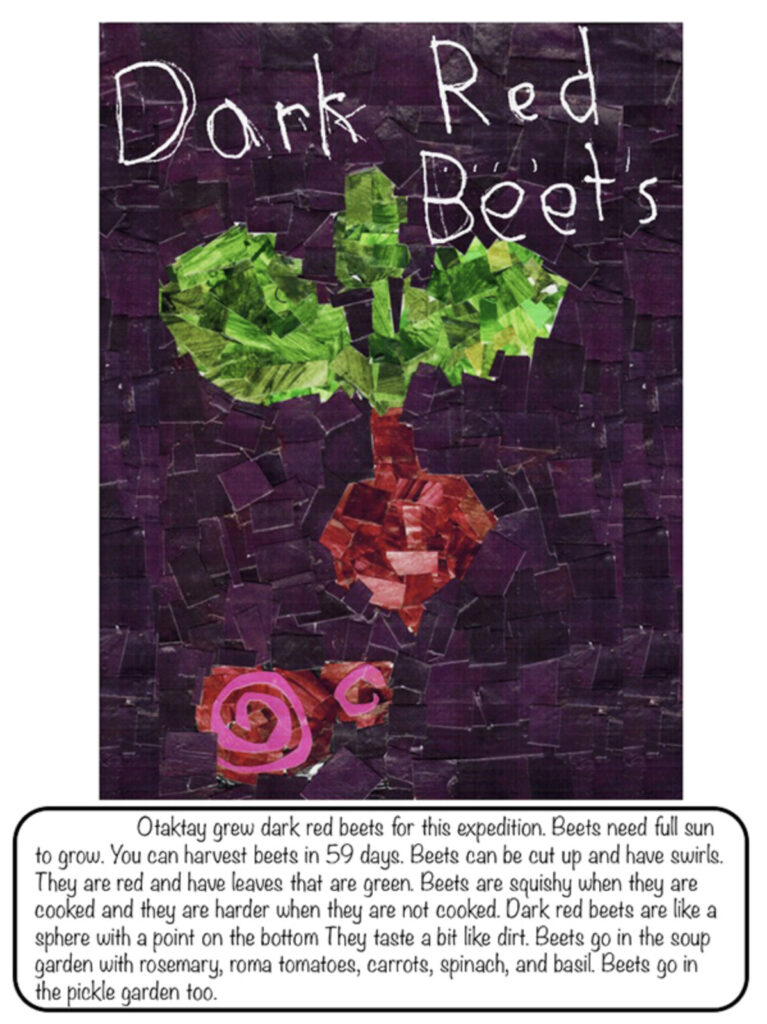
KinderCREW grew Wisconsin Fast Plants to learn about the parts of a plant and what makes plants different from other living things. Students learned all about the life cycle of plants and what plants need to grow. A science notebook was used to record observations and keep track of everything that was learned.Next, they learned about plants as food. Students learned how food goes from a seed to the food in a lunchbox. The CREW applied the knowledge they gained in the first case study to grow their own food plants. Vegetable-rich recipes were studied and students collaborated to map a garden for each recipe. They created plant information tags as a final project. The tags feature a VanGogh-style collage on the front and student-written information on the back.
Birds of the Palouse: 1st and 2nd Grade Expedition
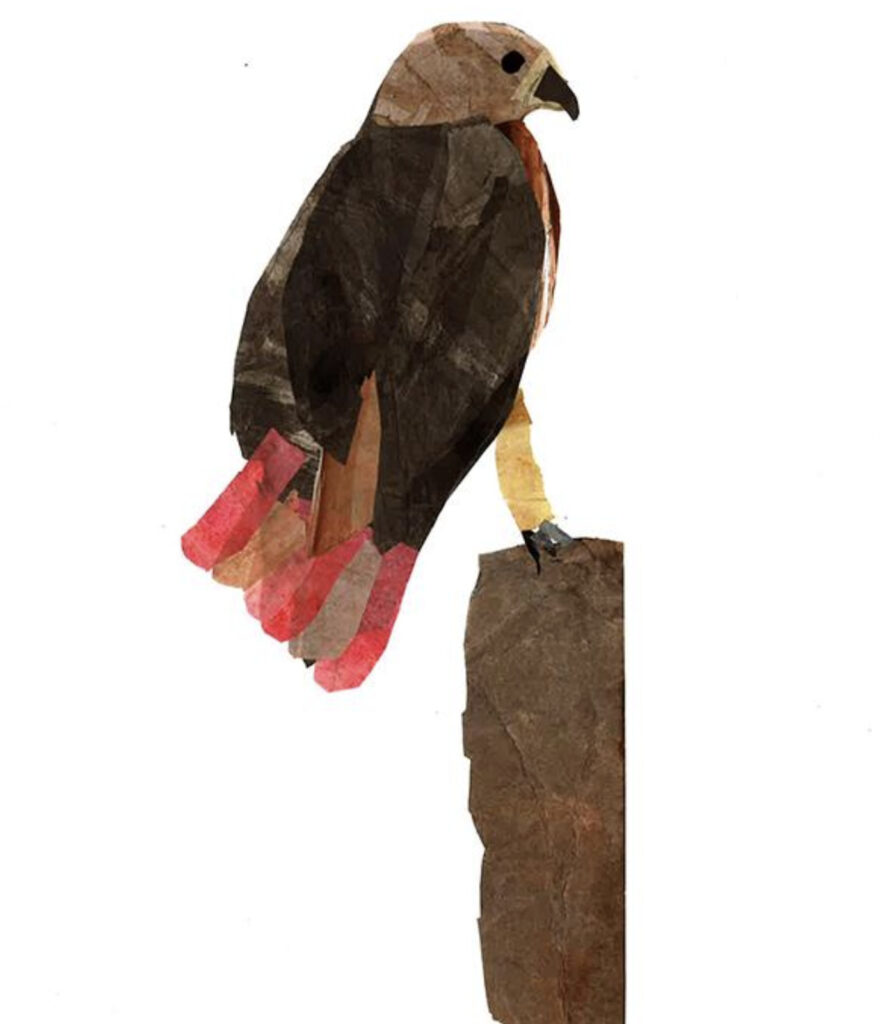
First and second-grade students created these watercolor collages of birds after a hands-on exploration of the way different birds adapt to survive in their unique environments. Students practiced different techniques for mixing and laying colors and experimented with creating effects using different brush strokes and sizes. They created multiple drafts and participated in multiple rounds of critiques to produce a high-quality piece of work. They also wrote an informational paragraph about their bird to accompany the collages. The final product was a set of notecards which are sold at the local bookstore and school. Students spent a long time with this product to learn the medium and work on actual products.

